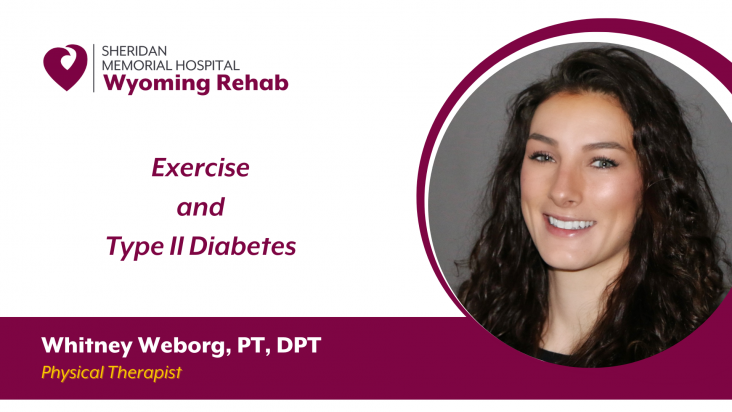By Whitney Weborg, PT, DPT
A patient tells us … “I was diagnosed with Type II diabetes (or prediabetes) and my doctor told me to exercise. What now?” Being told you have Type II Diabetes can be daunting. We are happy to help people “ease” into exercise.
The Why – Studies show that exercise affects carbohydrate metabolism in both the short- and long-term. In the short-term, exercise can improve insulin sensitivity following a meal. In the long term, regular aerobic exercise can improve glycemic control, among other benefits. In fact, A1C may be reduced by 0.5-0.7 percentage points! In addition, some studies suggest that combining both resistance training and aerobic exercises could have an even more significant effect. Higher exercise intensity can also lead to larger reductions in A1C.
The How – Before we get into exercise recommendations, the best exercise is the one you enjoy and can maintain long-term. The American College of Sports Medicine (ACSM) recommends aerobic exercise and resistance training. When it comes to aerobic training, we should strive for 30 minutes of moderate-intensity exercise five days per week or 20 minutes of vigorous-intensity exercise 3 days per week. This might sound like a lot, but you don’t have to jump into it immediately. At Wyoming Rehab, we recommend a gradual build-up to allow your body to adapt to the new activity! When it comes to resistance training, ACSM recommendations are to train for at least two days a week and to work all major muscle groups to improve muscle strength and endurance.
Not sure how to get started? The ACSM has a helpful and informative website. You can check it out here: https://www.acsm.org/education-resources/trending-topics-resources/physical-activity-guidelines.
For more guidance on exercise and type II diabetes, call Wyoming Rehab today at 307.674.1632 to schedule a FREE screen. We can help you get started!

